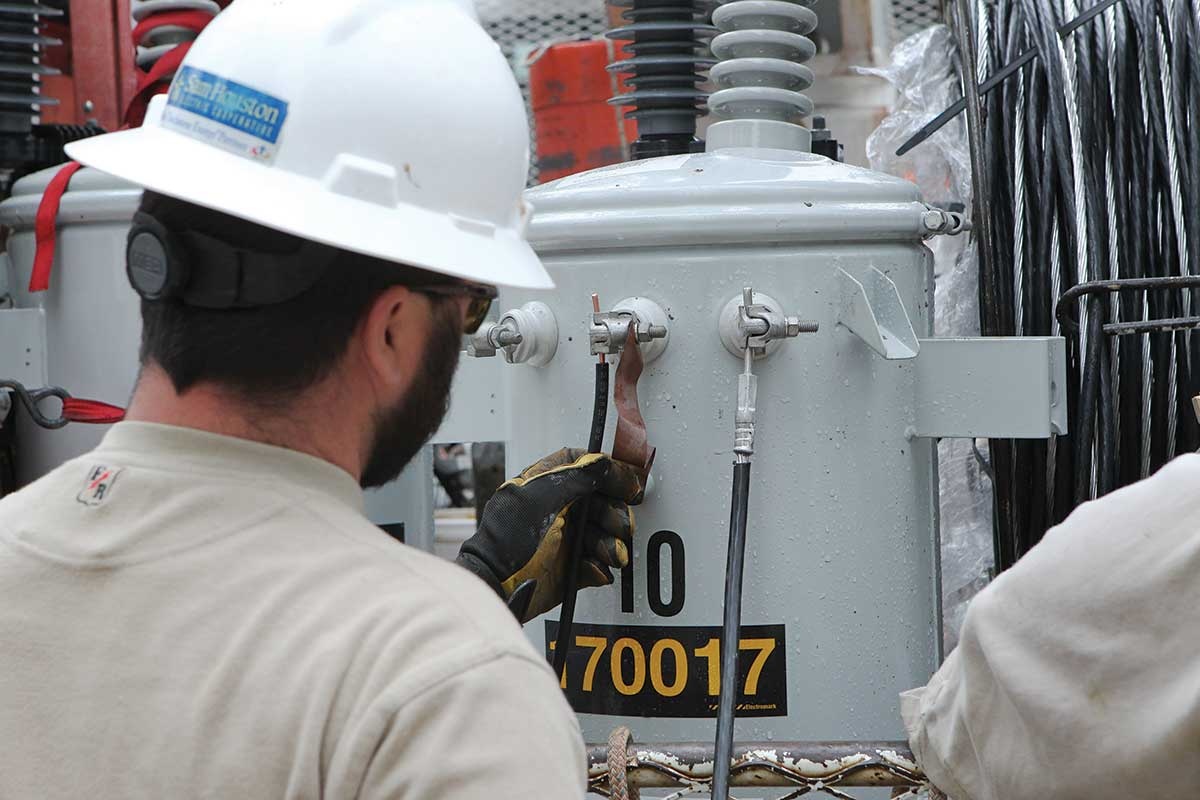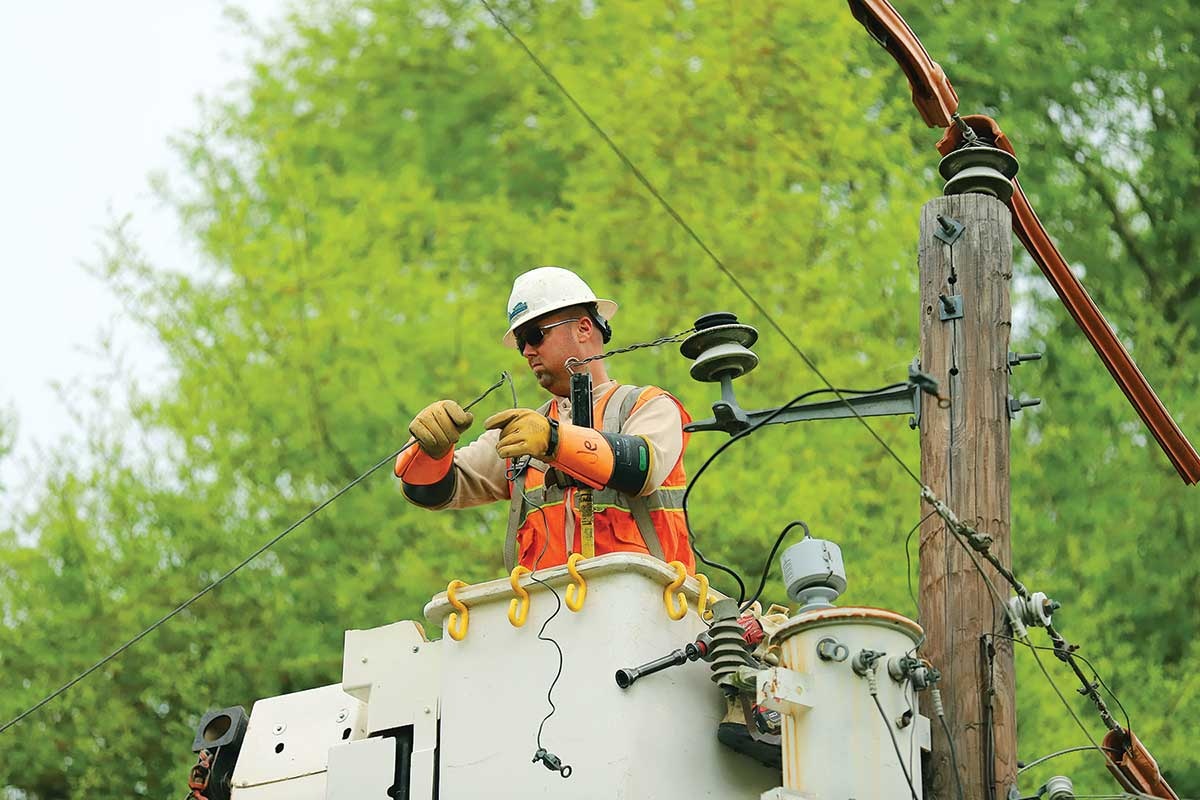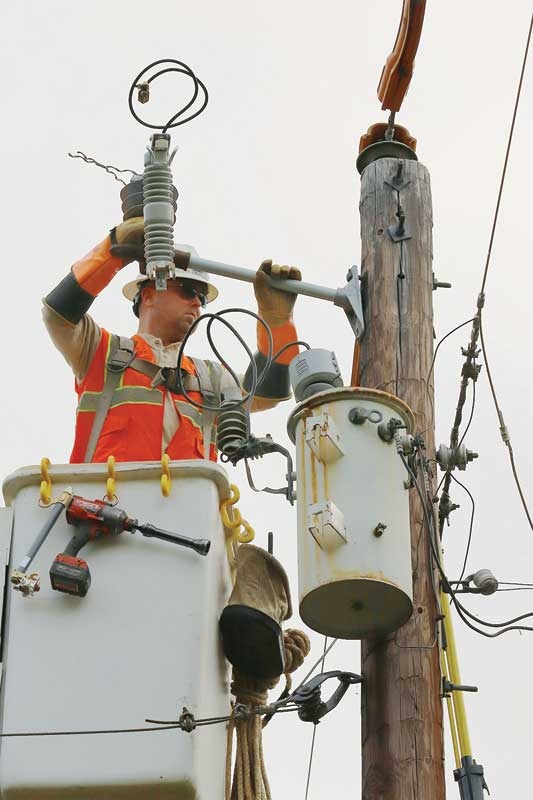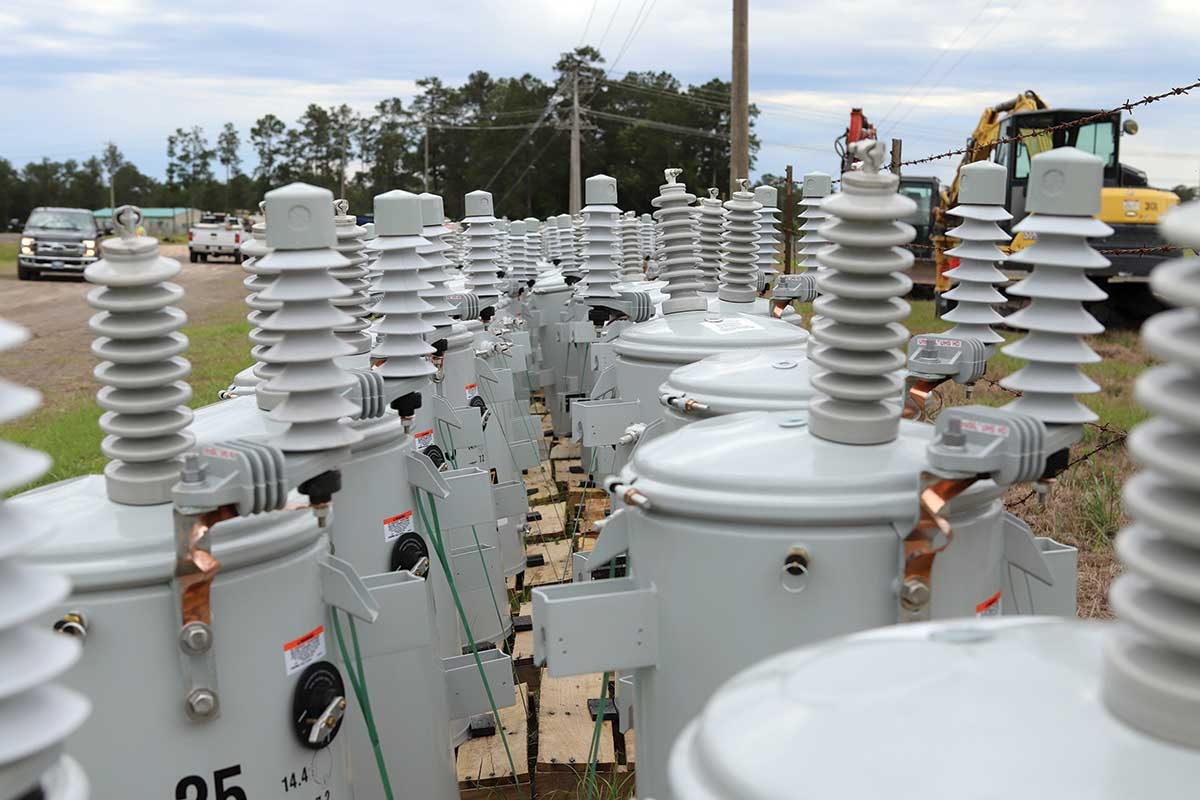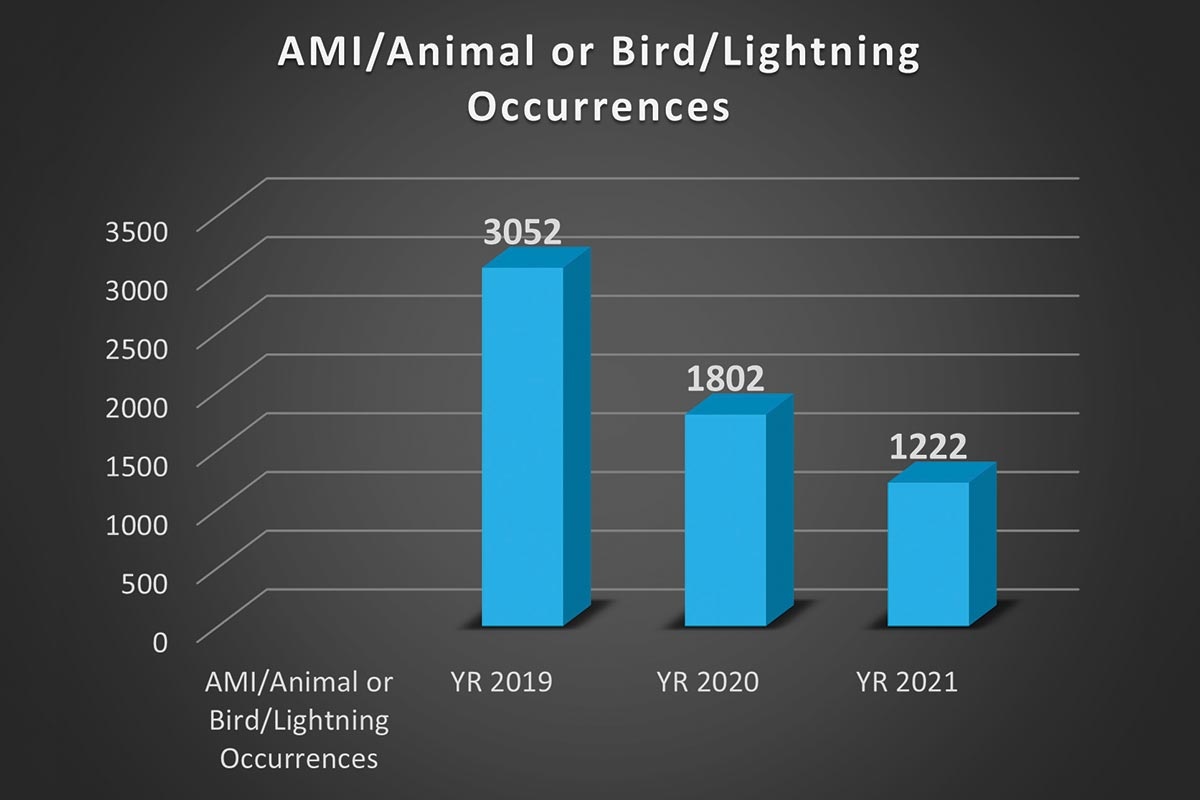Sam Houston Electric Cooperative employees do all they can to keep electricity flowing to members’ homes and businesses.
“Our goal is to keep their lights on. We take our reliability very seriously,” said Herman Allen, reliability task force team leader and an electrical technician at Sam Houston EC. “We want to get it to where a member’s lights never go out.”
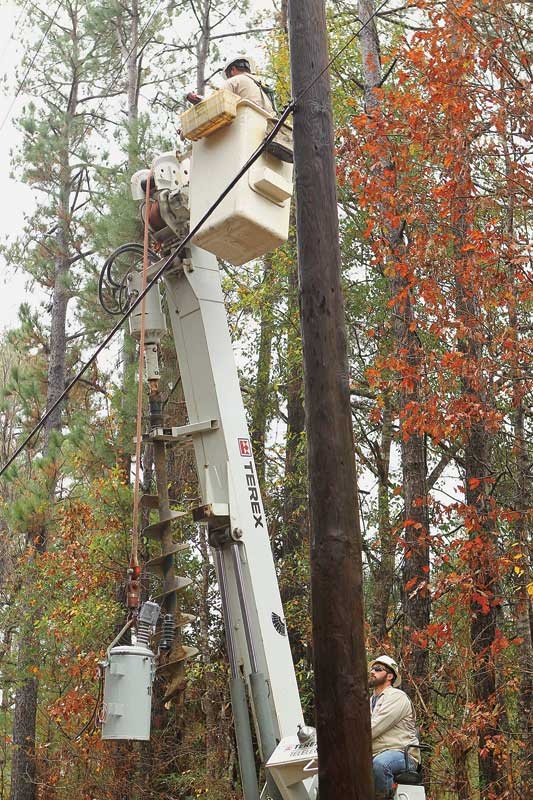
A transformer fitted with an animal guard and lightning arrester is hoisted into position near Spurger. The guard and arrester have reduced outages.
Sam Houston EC implemented a strategic plan in 2018 that included steps to improve reliability across its system. As part of that initiative, the Co-op formed a reliability task force to reduce the number and duration of outages across its more than 6,000 miles of distribution line that cover an area roughly the size of Connecticut. The task force is comprised of employees from all levels and areas relating to reliability, from line technicians to management.
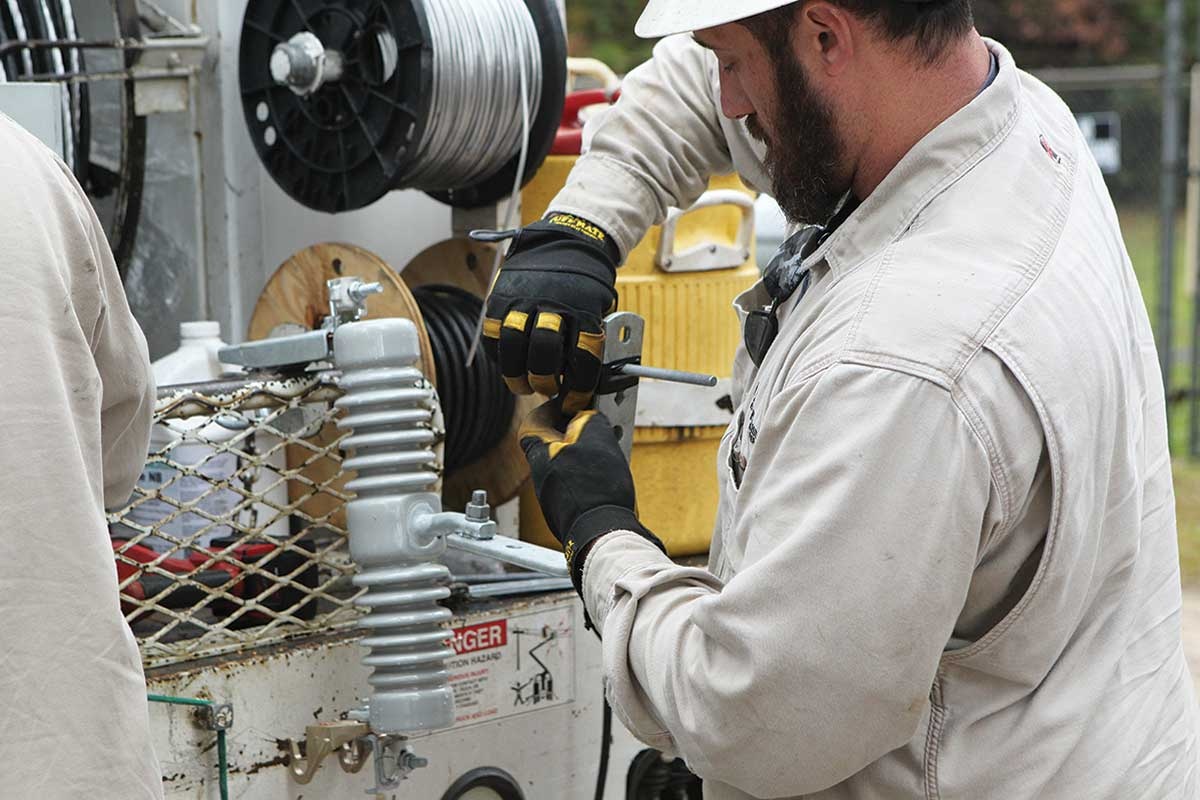
Justin Stewart, a Woodville line technician, prepares a device before it’s mounted to a pole.
“Everyone brings their own point of view, and when everyone brings their point of view together, then the whole picture really comes into focus,” said Ryan Brown, task force member and chief engineer. “We can see the big picture and where to make improvements on reliability.
“Our line technicians may not know why the engineering department does things a certain way, and our engineers can understand what our line technicians see, but because we get feedback from [line technicians], we can do it in a different or better way.”
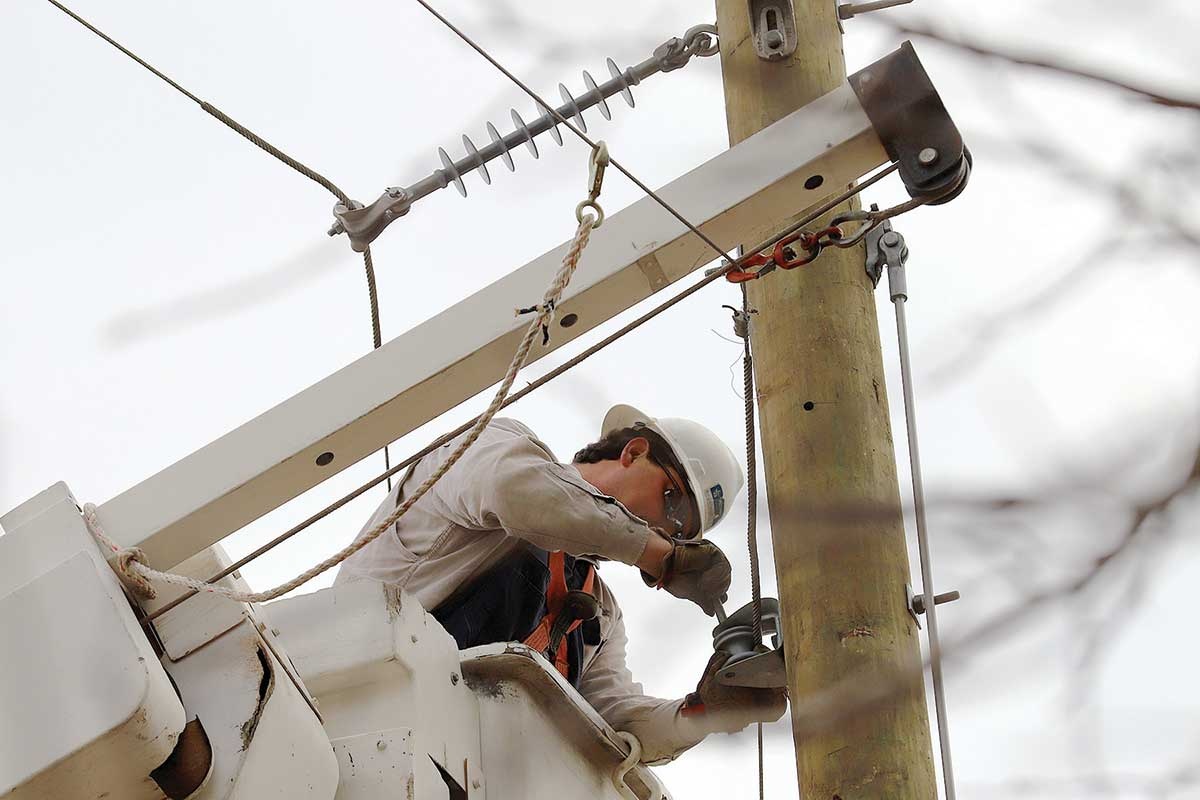
Jason Valderez, a Livingston line technician, attaches a device as a new pole is installed near Seven Oaks.
According to Allen, the most critical part of the multiyear plan to reduce outages is also a team effort. Until the reliability task force was formed, the Co-op’s outage management system was underutilized. Line technicians would restore power, but they didn’t always investigate the reason for the outage or relay the cause of the outage to the Co-op’s system operators.
“We had to train the line technicians to input the information that caused an outage,” Allen said. “We had a lot of ‘unknown’ for outages. We didn’t know why there was an outage, so we couldn’t track the reason why power was out.”

Zach Johnson, a Livingston line technician, replaces an insulator that was hit by lightning. Lightning did not cause a prolonged outage, but if the insulator is not replaced, it could cause an outage later.
That lack of information was the hardest part, he said. “It took us about nine months to get it straightened out. Now it is awesome. When I pull the data now, I don’t have to look up hardly any of the outages to verify it. The data the line technicians are providing is absolutely spot on.”
As team leader, Allen’s primary responsibilities are to schedule meetings and verify all team members are doing their part. He leads monthly meetings, and he coordinated virtual meetings when employees were not coming into the offices due to the COVID-19 pandemic.
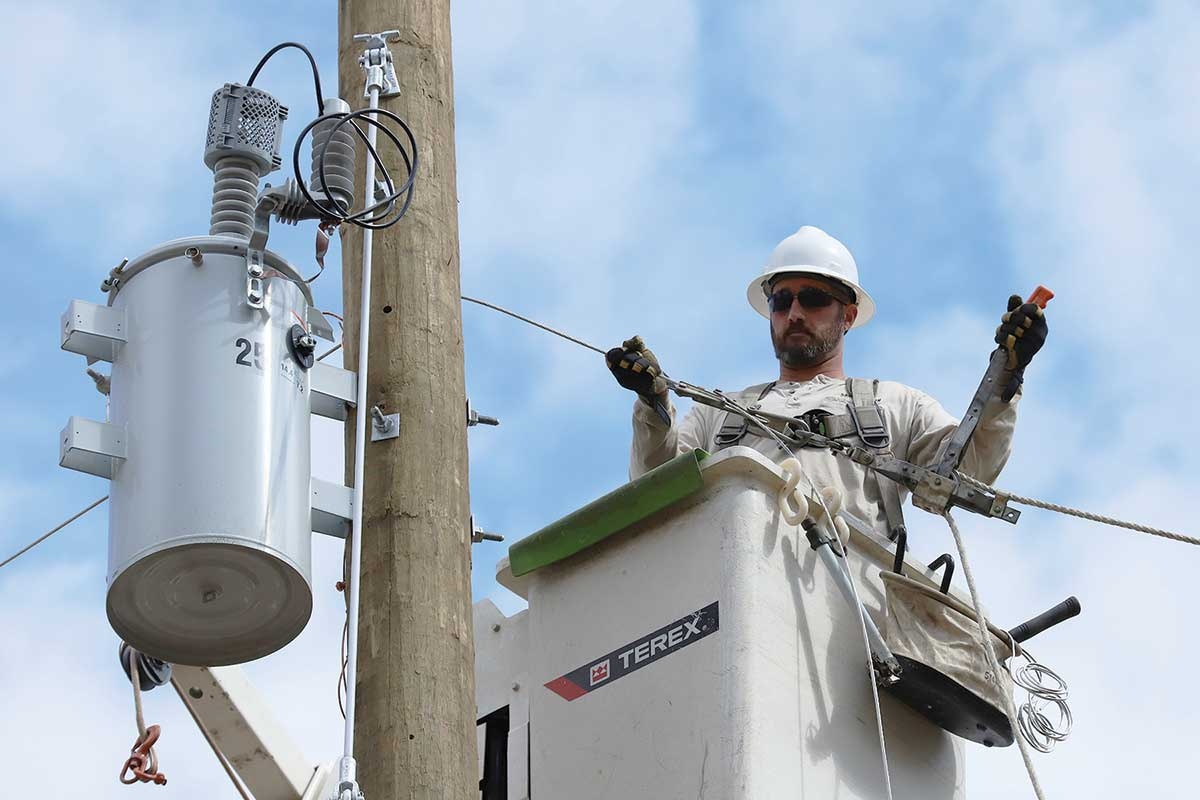
Justin Stewart installs underground service to a member near Colmesneil. A lighting arrester and animal guard were added to the transformer during the installation process. The line has no power during this portion of the process.
In the early months of the task force, Allen typically dedicated 15–20 hours a week to sifting through and organizing data. This was in addition to his usual responsibilities as an electrical technician. Now, as processes have improved three years into the plan, Allen typically dedicates five to seven hours weekly to the task force.
The outage cause data enabled the task force to make and implement several suggestions with great success. The wildlife protection plan has been the biggest success to date. Squirrels and birds were primary causes of outages in some areas of the system. Squirrels would use flat metal brackets as perches, so the brackets were replaced with fiberglass tubes, reducing the number of outages caused by squirrels. Some poles were popular among woodpeckers, creating weakened poles. A special wire was wrapped around poles and attached with fiberglass pins. Plastic covers were added to the tops of transformers, also reducing the number of outages caused by squirrels.
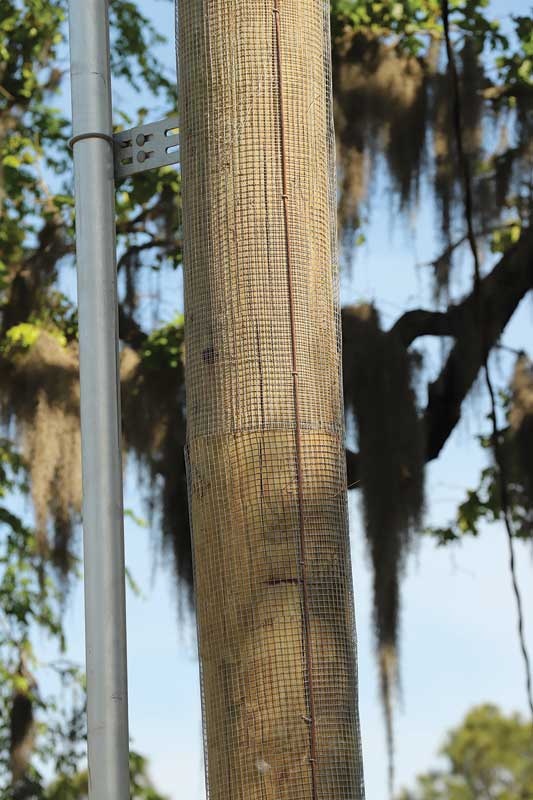
Bird wire is attached to a pole near Onalaska to prevent woodpeckers from damaging poles, causing poles to become unsafe and unreliable, forcing replacement.
The task force is currently identifying areas experiencing outages from lightning strikes. Most lightning-related outages are in the southern portion of the Co-op’s service area. Automatic reclosers will be added in those areas as part of a pilot program, Brown and Allen said. If the data shows they result in fewer and shorter outages, more reclosers will be added.
If the automatic reclosers work as expected, Allen said, a member will experience a short “blink” instead of an outage, which would take more than an hour for line technicians to respond to and restore power.
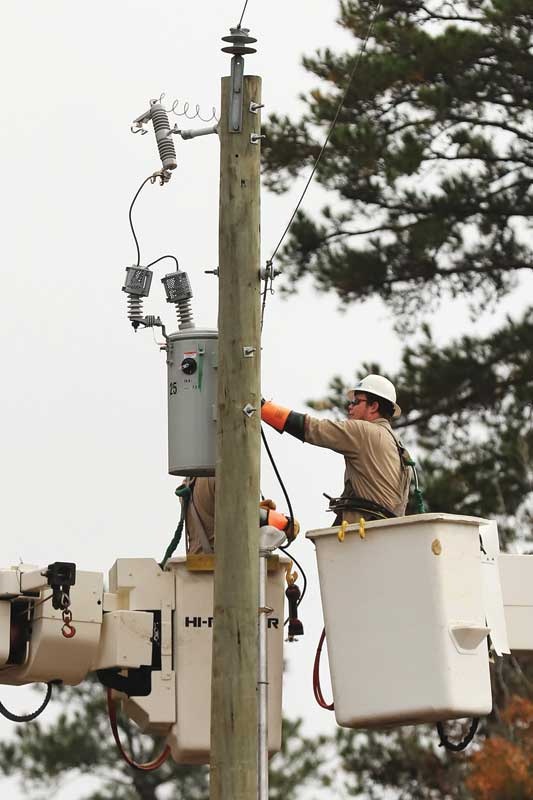
David Yeager, a Coldspring line technician, outfits a transformer with animal guards and a lightning arrester for a new member in San Jacinto County.
Sam Houston EC is also identifying portions of its system suitable for a technology best described as self-healing. The fault location, isolation and service restoration program automatically reduces the impact of an outage to as few members as possible. Power is then rerouted from other portions of the system to members downstream or upstream from the outage using special software. Normally, those members not directly affected by the outage would also be without power for hours, but FLISR cuts their outage time to less than a minute. FLISR is not an appropriate solution for all areas, but the Co-op is identifying portions of the system suitable for the program.
Implementation of several reliability programs has already led to measurable results, according to Brown. The task force identified two particular lines in separate portions of the system after scrubbing and analyzing all the data. The two lines accounted for 131 outages in 2019. In 2020 the Co-op dramatically reduced the combined outages on those lines to just 25, following implementation of the wildlife protection program. Through the first 10 months of 2021, the total combined outages on the two lines was 10—a 92% reduction in just two years.
Co-op members can also help the reliability task force when they report an outage.
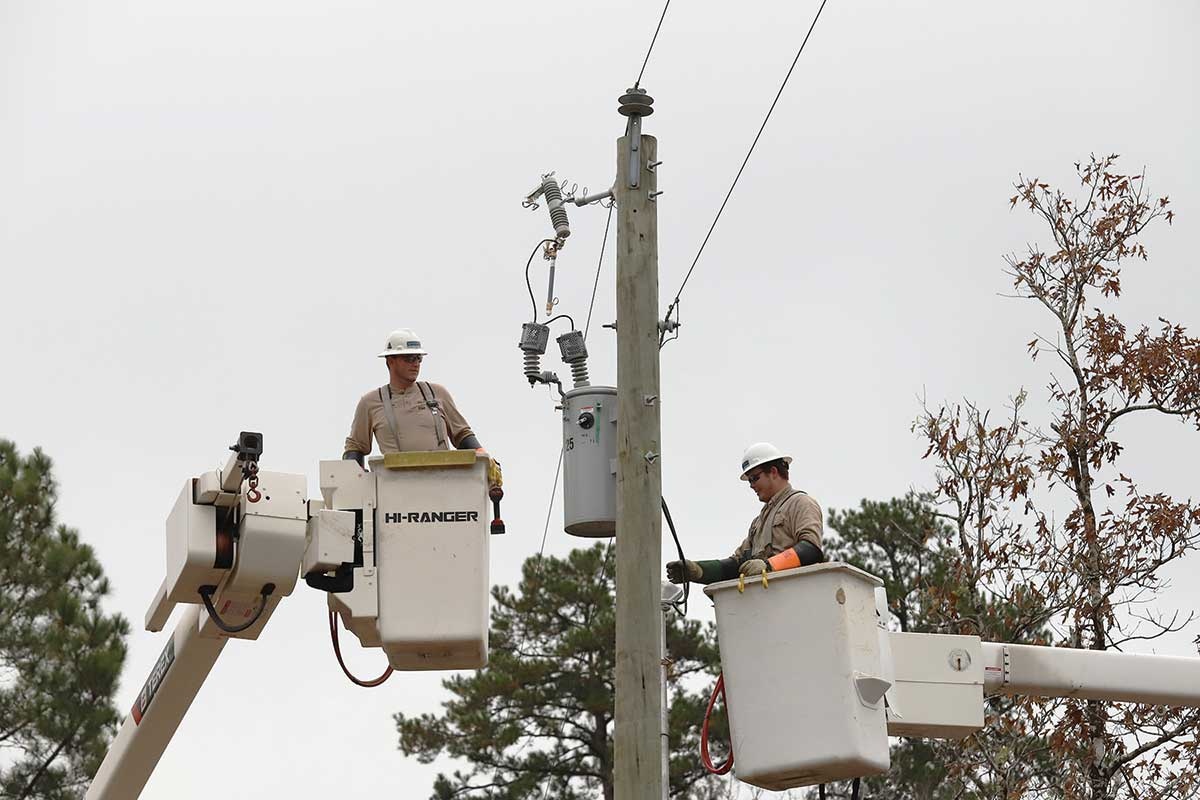
Coldspring line technicians David Yeager, right, and Kamron Lowe attach animal guards and a lightning arrester to a transformer in San Jacinto County.
“If a member knows the reason why there is an outage, they can let us know,” Allen said. “If a limb falls on the line and it burns off, then we don’t know the tree limb was there. If a member saw a squirrel in the line, then let us know. We may be able to replace the bracket or add an animal guard.”
